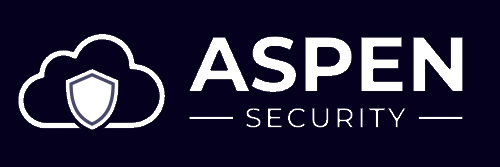In today’s interconnected digital world, terms like cybersecurity and cloud security are often used interchangeably. While they share similarities, they address distinct aspects of protecting digital assets. Understanding the difference is crucial for businesses and individuals aiming to safeguard their data and operations effectively. Let’s dive into what sets these two essential domains apart.
What Is Cybersecurity?
Cybersecurity is the broad umbrella term encompassing the practices, technologies, and processes designed to protect systems, networks, and data from cyber threats. It applies across all types of digital environments, whether they are on-premises, in the cloud, or hybrid.
Key areas of cybersecurity include:
- Network Security: Protecting the integrity of networks and data as they are transmitted.
- Endpoint Security: Securing individual devices like laptops, smartphones, and tablets.
- Application Security: Safeguarding software applications from vulnerabilities during development and deployment.
- Data Security: Ensuring sensitive information is protected, both in transit and at rest.
- Incident Response: Detecting, responding to, and mitigating cyberattacks.
Cybersecurity encompasses all forms of threats, such as phishing, malware, ransomware, and Distributed Denial-of-Service (DDoS) attacks, regardless of where the data or infrastructure resides.
What Is Cloud Security?
Cloud security, on the other hand, is a specialized branch of cybersecurity that focuses exclusively on protecting cloud-based environments, data, and applications. With the increasing adoption of cloud computing services, such as Amazon Web Services (AWS), Microsoft Azure, and Google Cloud Platform (GCP), cloud security has become a critical discipline.
Key areas of cloud security include:
- Data Encryption: Ensuring that data stored or transmitted in the cloud is encrypted and secure from unauthorized access.
- Identity and Access Management (IAM): Controlling and restricting who has access to cloud resources.
- Configuration Management: Ensuring that cloud services are set up correctly to avoid misconfigurations, which can lead to vulnerabilities.
- Compliance: Adhering to industry-specific regulations, such as GDPR, HIPAA, or ISO standards, within a cloud environment.
- Shared Responsibility Model: Understanding that cloud security is a shared responsibility between the cloud service provider and the customer.
Key Differences Between Cybersecurity and Cloud Security
While both disciplines aim to protect digital assets, they differ in scope and focus:
AspectCybersecurityCloud SecurityScopeBroad, covering all types of IT infrastructure.Specific to cloud-based environments.FocusProtects systems, networks, and devices.Secures cloud data, services, and applications.Threat LandscapeIncludes all digital threats.Focuses on threats specific to cloud services.ResponsibilityFully managed by the organization.Shared between the cloud provider and user.Technology StackIncludes firewalls, antivirus software, and IDS/IPS.Involves IAM, encryption, and API security.
Why the Distinction Matters
The distinction between cybersecurity and cloud security is essential because not all cybersecurity measures automatically translate to cloud environments. As more businesses migrate to the cloud, understanding and implementing specific cloud security practices becomes critical to mitigate risks like misconfigured servers, unauthorized access, and data breaches.
For example:
- A traditional firewall may protect on-premises infrastructure but is ineffective in a multi-cloud setup.
- Identity and Access Management (IAM) is crucial in cloud security to control permissions across virtualized resources.
How They Work Together
Despite their differences, cybersecurity and cloud security are complementary. A robust security strategy should integrate both disciplines to provide end-to-end protection:
- Use cybersecurity best practices to secure endpoints and networks.
- Leverage cloud security measures to safeguard cloud-hosted data and applications.
Final Thoughts
While cybersecurity provides the overarching framework for protecting digital assets, cloud security hones in on safeguarding cloud-specific environments. As businesses increasingly adopt cloud solutions, recognizing and addressing the unique challenges of cloud security becomes paramount.
Understanding the differences and how they overlap ensures that businesses can build resilient defenses, adapt to evolving threats, and confidently embrace digital transformation.
Let’s secure the future — together.
Need Help Managing Cloud Security?
At Aspen Security, our experts specialize in cloud security threat detection, prioritization, and remediation management. If you’re looking to strengthen your cloud security strategy or need help implementing CNAPP, CSPM, or CWPP, we’re here to assist.
Reach out to a cloud security expert today at info@aspensecurity.io and let us help you protect what matters most.


